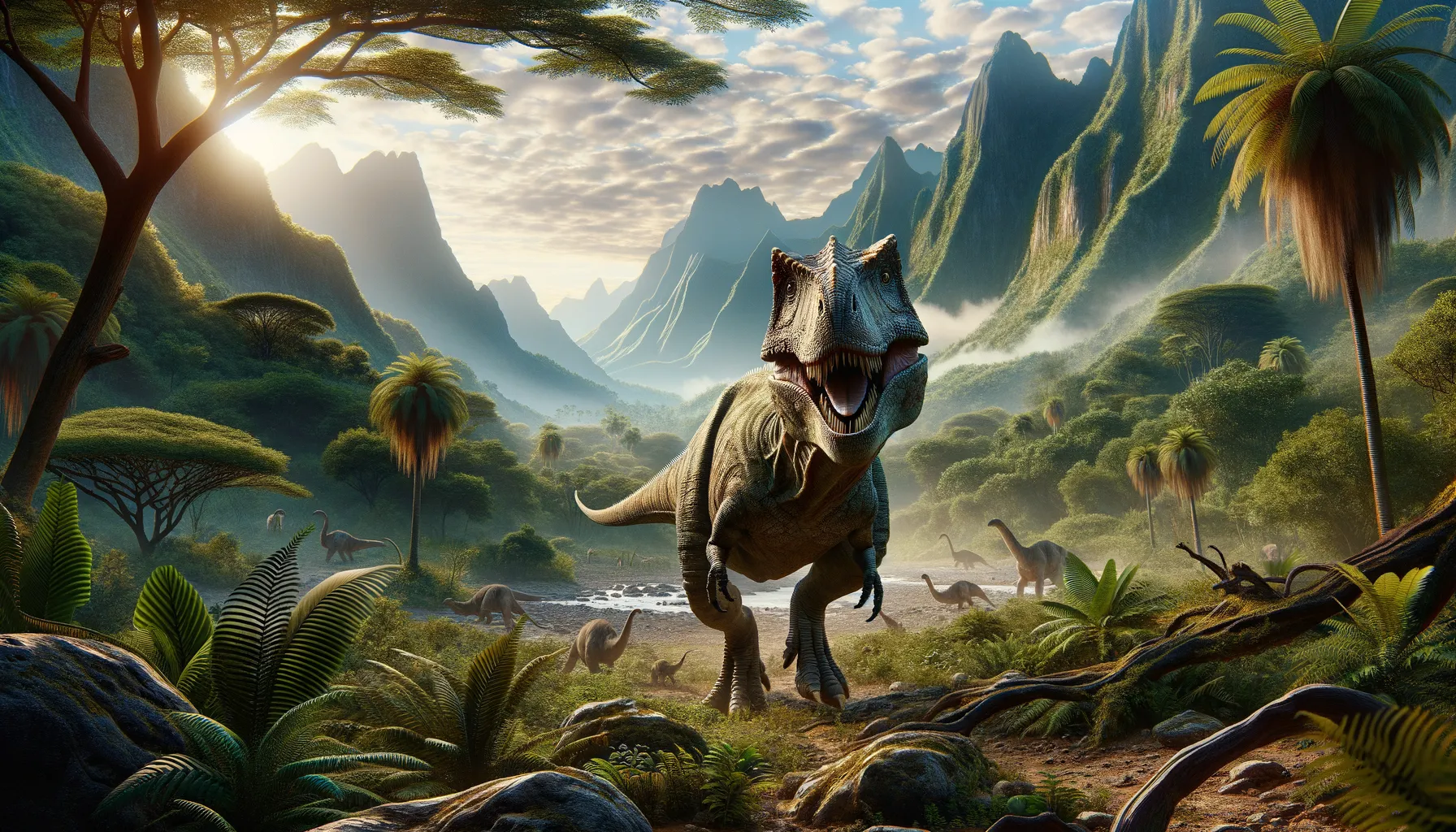
Ilokelesia
A robust predator of the Cretaceous plains.
Period
Cretaceous
Length
About 4 to 5 meters in length.
Height
Approximately 1.5 meters tall at the hips.
Weight
Estimated to weigh roughly 200 to 300 kg.
Ilokelesia was a medium-sized theropod dinosaur that roamed the earth during the Cretaceous period. Discovered in South America, it provides valuable insights into the diversity of abelisaurids, a group of carnivorous dinosaurs. Characterized by its robust build and relatively short limbs, Ilokelesia likely relied on its strong jaws and teeth to capture prey. Its discovery has helped paleontologists understand the evolutionary paths of its relatives.
Diet
Ilokelesia was a carnivore, likely preying on small to medium-sized animals. Its diet would have consisted of other contemporaneous dinosaurs and possibly smaller vertebrates.
Hunting
This dinosaur probably used ambush tactics due to its stocky build and slower speed. Its strong jaws and sharp teeth were adapted for gripping and tearing flesh efficiently.
Environmental challenges
Living in a semi-arid environment, Ilokelesia faced challenges such as scarcity of prey and periodic climate changes. It needed to adapt to varying food availability and possibly frequent droughts. Natural predators and competition for resources among other theropods also posed significant challenges.
Speed
Likely a relatively slow runner compared to other theropods.
Lifespan
Estimated to be around 20 to 30 years.
First discovery
First discovered in Neuquén Province, Argentina in 1991.
Fun Facts
- Ilokelesia was a theropod dinosaur that lived about 90 million years ago in what is now Argentina.
- The name Ilokelesia means 'small yet capable robber,' an intriguing nod to its agility and predatory skills.
- Despite being a theropod, Ilokelesia was relatively small, estimated to be only about 13 feet long.
- Ilokelesia is part of the Abelisauridae family, known for their stocky builds and tiny arms.
- Its discovery helped scientists understand more about the diversity of theropods in South America during the Late Cretaceous.
- Ilokelesia's fossils were discovered in the Huincul Formation, a site rich in dinosaur remains.
- The skull of Ilokelesia reveals a unique mix of primitive and derived features, offering insights into dinosaur evolution.
Growth and Development
Ilokelesia likely hatched from eggs, growing rapidly in its early years to avoid predation. Its development would have included transitioning through various life stages, with distinct physical changes as it matured. Growth rings in fossil bones suggest periods of fast growth followed by slower periods, likely corresponding to environmental factors.
Habitat
It inhabited the region of modern-day South America, which during the Cretaceous period, was a mix of open plains and some forested areas. The climate would have been warm, supporting a diverse range of plant life. This habitat provided adequate resources and coverage for both hunting and evading predators.
Interaction with other species
Ilokelesia may have lived alongside other theropod species, potentially leading to competition for food. Its interactions could have included scavenging opportunities left by larger predators. It might have also preyed upon or competed with smaller dinosaur species coexisting in its environment.
Natural lifespan
Ilokelesia likely had a lifespan similar to other small to medium theropods, around 20 to 30 years.
Reproduction
Ilokelesia reproduced by laying eggs, as indicated by fossilized nests found in related species. Parental care, if any, is a subject of debate, but the young were likely left to fend for themselves soon after hatching. Clutches provided a higher chance of survival for some offspring in harsh environments.
Social behaviour
Little direct evidence exists about its social behavior, but like many carnivorous dinosaurs, it was likely a solitary hunter. However, it may have come together in groups during certain periods, such as breeding seasons or in response to abundant food sources.
Fossil locations
Fossils of Ilokelesia have primarily been discovered in the Neuquén Province of Argentina, a region known for a rich assembly of Cretaceous dinosaur remains. This area provides crucial information about South America's dinosaur fauna during that period. Its discovery contributes to the broader understanding of abelisaurid distribution and evolution.
